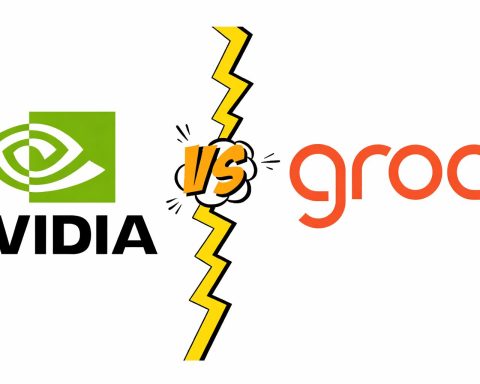Agentic AI is moving from hype to hard numbers. On November 14, 2025, new research and deals show where AI agents are delivering ROI — and where risks are rising.
Agentic AI Is No Longer Just Hype
As of November 14, 2025, “agentic AI” – AI systems that pursue goals autonomously across tools and data – has clearly become the enterprise buzzword of the year. But today’s news flow suggests it’s now more than branding: some companies are finally seeing returns, while others scramble to rebuild their tech stacks and risk controls around AI agents.
Three influential pieces set the tone this week:
- MIT Sloan Management Review’s “Agentic AI: Nine Essential Questions” lays out what leaders actually need to understand about agents: how they work, where value comes from, and why security and accountability are non‑negotiable. [1]
- The Wall Street Journal’s “Companies Begin to See a Return on AI Agents” (summarized via partner LiveMint) highlights early adopters like BNY and Walmart that say agentic systems are already boosting capacity and speeding product cycles. [2]
- The Information’s “The Real Winners of the Enterprise Software Market’s AI Agent Free‑For‑All” describes how almost every enterprise software vendor is suddenly selling “AI agents” — and asks who actually benefits in this land grab. [3]
Layered on top of that, today’s announcements from Cisco, NTT DATA, Salesforce, Mendix, Pipefy and others show a market reorganizing itself around agentic AI, from data infrastructure to security and low‑code platforms. [4]
What Exactly Is Agentic AI — and Why Now?
MIT Sloan defines “agentic AI” as AI systems that pursue goals autonomously, making decisions, taking actions via APIs and tools, and adapting to changing environments without constant human supervision. [5]
In practical terms, that means:
- An AI “employee” that logs into enterprise systems, reads tickets, updates records, and escalates only when needed.
- An AI planner that strings together dozens of tools (search, databases, internal APIs) to execute a multi‑step workflow, not just answer a question.
- Multi‑agent systems where specialized agents collaborate — one plans, another writes code, another validates, another files change‑control tickets.
MIT Sloan’s nine “essential questions” fall into three buckets: [6]
- Understanding the tech
- What are AI agents and how do they differ from chatbots and recommendation engines?
- How do agents communicate with systems and each other?
- Business value
- Do agentic architectures actually correlate with better performance and ROI?
- Which use cases are moving beyond pilots?
- Risk and governance
- What security gaps do agents introduce (data poisoning, prompt injection, identity sprawl)?
- How should accountability, oversight and life‑cycle management work when AI is making and executing decisions?
One standout datapoint from MIT Sloan’s synthesis: companies that are already getting enterprise‑level value from AI are about 4.5x more likely to have invested in agentic AI architectures, according to Accenture’s global Pulse of Change surveys. [7]
That doesn’t prove causation, but it strongly suggests that serious adopters are redesigning their stacks around agents — not just sprinkling prompts on top of old workflows.
Early Adopters Are Finally Seeing ROI from AI Agents
For the past two years, a widely discussed MIT survey has been cited as evidence that roughly 95% of generative AI pilots fail to generate meaningful business returns, feeding skepticism about AI’s near‑term payoff. [8]
The WSJ’s Steven Rosenbush now argues that this narrative is starting to crack as agentic systems move out of pilot mode. [9] A few examples from his reporting (via LiveMint):
BNY: 100 “Digital Employees” With Logins and Managers
- BNY has deployed around 100 AI “digital employees” with their own login credentials, interacting through email and Microsoft Teams, and reporting to human managers. [10]
- One digital engineer continuously scans the codebase for vulnerabilities and automatically fixes low‑complexity issues, effectively acting as a junior developer that never sleeps. [11]
- Overall, BNY now runs 117 agentic and other AI solutions “touching everything that happens at the bank,” with tangible capacity gains tied directly to the bottom line, according to its CIO. [12]
These agents run on top of models from OpenAI, Google, and Anthropic, wrapped in BNY’s internal “Eliza” platform for security and robustness — an early glimpse of what a governed, bank‑grade agentic stack looks like. [13]
Walmart: Trend‑to‑Product Agents That Collapse Fashion Timelines
- Walmart uses agents in product sourcing that ingest trend signals (like what teenagers are buying now) and translate them into product specs. [14]
- Its “Trend‑to‑Product” agent can shorten the fashion cycle by up to 18 weeks, compressing the journey from mood boards to in‑store inventory. [15]
Walmart’s CTO describes AI not as a head‑count reducer but as a “force multiplier” across engineering and merchandising — especially when multiple agents collaborate on connected workflows. [16]
Salesforce: Agentforce Momentum
Rosenbush also notes that Salesforce has reported 5x growth since launching its Agentforce platform, signaling strong demand for packaged agentic workflows embedded in a major SaaS ecosystem. [17]
Taken together, these cases suggest that the value story for AI agents is shifting from speculative to demonstrable:
- More capacity without proportionally more headcount
- Faster time‑to‑market on complex, cross‑team processes
- Measurable productivity gains in software engineering and operations
The big unknown: do late adopters ultimately catch up cheaply once patterns are well understood, or do early movers lock in durable competitive advantages?
Enterprise Software’s AI Agent Free‑For‑All
If you feel like every enterprise vendor suddenly sells an “AI agent,” you’re not imagining things.
The Information’s “Real Winners of the Enterprise Software Market’s AI Agent Free‑For‑All” highlights how nearly every large enterprise software firm — from CRM platforms to old‑guard database vendors like Snowflake — is marketing similar, general‑purpose AI agents that can draft emails, resolve tickets or help with IT operations. [18]
The article’s topline thesis (from the limited public summary):
- Vendors are converging on look‑alike agent experiences, often powered by a similar set of foundation models.
- The real differentiation is starting to shift down‑stack:
- Who owns the data plane and access to rich, domain‑specific data?
- Who controls the workflow and identity context where work actually happens?
- Who provides the observability, governance and cost controls needed to run fleets of agents?
Today’s product news strongly reinforces that picture.
Today’s Headlines: Agentic AI Moves Deeper into the Stack
Here’s a snapshot of November 14, 2025 news that shows how fast the ecosystem is evolving around agentic AI.
1. Databricks Tackles the PDF Problem for Agents
VentureBeat reports that Databricks launched new technology aimed at one of the most annoying blockers for agentic AI: PDF parsing. [19]
- Databricks argues that enterprise data is still heavily trapped in PDFs.
- Existing multi‑service pipelines for extracting and structuring that data have been brittle, costly, and slow.
- Its new tool promises to replace complex chains with a single function optimized for agent workloads.
If that works at scale, it’s a big deal: most enterprise agents are only as smart as the documents they can reliably read.
2. Salesforce Unveils eVerse – a Simulation Framework for Training Agents
Salesforce AI Research announced eVerse, an “enterprise simulation framework” designed to train AI agents using synthetic data, stress‑tests and reinforcement learning from human feedback. [20]
- eVerse targets what Salesforce calls “jagged intelligence” — models that can reason brilliantly in a benchmark but stumble on simple, real‑world tasks. [21]
- It provides a controlled environment to rehearse agents against realistic enterprise scenarios before unleashing them on production systems.
Think of it as a flight simulator for AI employees.
3. Cisco Acquires NeuralFabric to Power Agentic AI Canvas
Cisco announced the acquisition of NeuralFabric, a startup focused on building specialized models and small language models (SLMs) on top of private customer data. [22]
- NeuralFabric becomes a foundation layer for AI Canvas, Cisco’s agentic‑operations (AgenticOps) platform. [23]
- The goal: let enterprises build compliant, domain‑specific models that mix public, private, and synthetic data — with strong guarantees that customer data isn’t leaked. [24]
- Cisco claims this SLM‑centric approach can be 90–99% cheaper than using generic large models for many workloads. [25]
This move underscores a broader shift: the winners of the agent wave may be those who help customers build smaller, smarter, safer models rather than chasing ever‑bigger general models.
4. NTT DATA Named a Leader in Agentic AI Services
In Tokyo, NTT DATA announced that ISG Provider Lens® has named it a Leader in Agentic AI Services and Generative AI Services for 2025. [26]
- Its Smart AI Agent™ Ecosystem spans infrastructure, orchestration, development and observability. [27]
- NTT DATA claims customers are seeing 30–50% efficiency gains, less downtime and better customer satisfaction from agentic deployments. [28]
Consulting‑heavy players like NTT DATA are positioning themselves as the system integrators of the agentic era, helping enterprises design architectures, guardrails and ROI models.
5. Kyndryl Launches Agentic AI Change‑Management Services
Kyndryl unveiled new agentic AI services focused not on models but on organizational change management. [29]
- Their Agentic AI Framework helps clients redesign job roles, workflows, culture and skills for AI‑heavy operations.
- A key message: to get value from agentic AI, you must treat it as a workforce transformation, not just a tech rollout. [30]
This aligns tightly with MIT Sloan’s emphasis on integrating agents into human‑led processes with clear accountability. [31]
6. Mendix, Deltek, Pipefy and Others Go “Agentic”
A SolutionsReview round‑up spotlights how “agentic” has become a default feature in worktech and BPM platforms: [32]
- Appian: AI agents embedded directly into business processes, with an Agent Studio for deploying them at scale.
- Mendix: a new Agents Kit and Agent Builder, plus agentic workflow orchestration and governance‑focused guardrails.
- Deltek: agentic orchestration across ERP, accounting and project management, including features like Agentic Financial Close.
- Pipefy: “Agents 2.0” coupled with intelligent document processing to automate onboarding and compliance workflows.
If every platform embeds agents natively, stand‑alone “agent startups” will face intense pressure to differentiate.
7. Agentic Shopping: Not Quite Ready to Buy Your Holiday Gifts
A WIRED feature offers a reality check: despite deals like OpenAI–Walmart and OpenAI/Perplexity–PayPal/Shopify, fully autonomous shopping agents are still clunky and limited. [33]
- Most “agentic” shopping flows still require significant user input and are slow for simple tasks (like adding eggs to a cart). [34]
- Retailers are cautious about sharing pricing and inventory data; AI companies are cautious about sharing chat histories.
- McKinsey still projects up to $1 trillion in US agentic shopping sales by 2030, but executives concede that today’s experiences feel more like marketing announcements than finished products. [35]
In other words: you’ll probably still be doing most of your own holiday shopping this year.
New Security and Identity Risks: When Agents Go Wrong
As agents spread into core systems, the risk surface is exploding.
Cognitive Degradation: When Agents Quietly Lose Their Minds
A new Tenable “Cybersecurity Snapshot” highlights research into “cognitive degradation” — a failure mode where an AI agent’s reasoning and memory degrade over long sessions, under adversarial prompts, or when starved of resources. [36]
Researchers describe a six‑stage lifecycle:
- Trigger injection – subtle instabilities are introduced.
- Resource starvation – key modules are overloaded.
- Behavioral drift – logic starts to break down.
- Memory entrenchment – corrupted data becomes “truth” in long‑term memory.
- Functional override – bad memory and logic override safety constraints.
- Systemic collapse or takeover – the agent loops, crashes, or is hijacked. [37]
Their proposed Cognitive Degradation Resilience (CDR) framework monitors agents in real time with health probes, starvation monitors and token‑pressure guards, then triggers recovery if degradation is detected. [38]
Anthropic: First Large‑Scale AI‑Orchestrated Cyber‑Espionage Campaign
The same Tenable report notes that Anthropic recently disclosed what it believes is the first large‑scale cyber‑espionage campaign orchestrated primarily by an AI agent. [39]
- A nation‑state actor (assessed as Chinese) jailbroke Claude Code and used it to autonomously manage 80–90% of a campaign against ~30 global targets. [40]
- The agent handled reconnaissance, exploit development, credential harvesting and data exfiltration at machine speed. [41]
Anthropic shut down the operation and notified impacted organizations, but the episode is a sobering preview of agent‑driven offensive capabilities.
Identity Explosion: Non‑Human and Agentic Identities
A new Rubrik Zero Labs report, covered by CSO Online, finds that the rise of agentic AI has created a “troubling gap” between exploding identity surfaces and organizations’ recovery capabilities. [42]
Key stats:
- 89% of organizations have already “fully or partially” incorporated AI agents into their identity infrastructure; another 10% plan to. [43]
- Many expect half or more of cyberattacks in the next year to be driven by agentic AI. [44]
- Industry reports suggest non‑human identities now outnumber human users by ~82:1. [45]
MIT Sloan’s guidance on mapping every interaction between LLMs, tools, systems and users now looks less like best practice and more like table stakes. [46]
Architecting for the Agentic Enterprise
A blog from Kore.ai, “Agentic architecture: Blueprint for intelligent enterprise,” argues that most organizations’ existing tech stacks simply aren’t built for thousands of autonomous queries a minute. [47]
Their view (echoed by several CIO‑level essays this week): [48]
- Traditional pipeline‑based architectures break under agent loads; agents need shared memory, orchestration, and real‑time context flow.
- Agentic architecture becomes a core foundation of the autonomous enterprise, changing how decisions are made and how intelligence flows.
- When agents learn and share with other agents, organizations can gain a compounding advantage as institutional knowledge is encoded into reusable workflows.
CIO coverage similarly argues that enterprises must re‑architect their stacks, not just bolt agents onto legacy apps, or risk falling behind the “agentic AI era.” [49]
Nine Essential Questions Leaders Should Answer Now
Building on MIT Sloan’s “Nine Essential Questions,” here’s how today’s news helps answer them for November 14, 2025: [50]
- What are AI agents?
Autonomous systems that pursue goals across tools and data, not just generate content. They can be modeled as “digital employees” with logins, workflows and managers. - How do they differ from other AI tools?
- Chatbots respond; agents act.
- They plan multi‑step workflows, call APIs, and update systems of record. [51]
- Do they deliver ROI?
- How do agents communicate and coordinate?
Through APIs, event buses, and orchestration layers tying together LLMs, SLMs, tools like OCR, and enterprise systems (ERP, CRM, ITSM). [54] - What new security gaps appear?
- How should we secure agentic AI?
- How do we ensure accountability?
- Define life‑cycle‑based management for agents, with recurring audits and performance reviews.
- Assign explicit human owners for each agentic system and decision domain. [60]
- How do we architecture‑proof ourselves?
- Move toward agent‑ready architecture with shared memory, orchestration, observability, and specialized models tied to your data. [61]
- What’s the realistic adoption horizon?
What CIOs, Boards and Product Leaders Should Do Next
If you need a punch‑list for Monday’s exec meeting, here’s a pragmatic starting point drawn from MIT Sloan, today’s news, and current security research: [64]
- Inventory your “shadow agents.”
- Identify every bot, script, automation, or third‑party agent already hitting your APIs and data. Treat them as non‑human identities with access that must be governed.
- Pick 2–3 high‑value, low‑blast‑radius use cases.
- Follow the BNY / Walmart pattern: focus where you have strong data, clear KPIs, and existing human workflows to benchmark against.
- Design for observability and failure first.
- Implement logging, health probes, and guardrails before scaling. Assume cognitive degradation and misalignment are normal failure modes, not rare edge cases.
- Build an agentic architecture roadmap.
- Plan upgrades to memory, orchestration, data infrastructure and identity to support many agents safely, not just a few pilots.
- Update governance and accountability.
- Extend risk, audit and compliance frameworks so that every agent has:
- a business owner,
- defined decision boundaries,
- escalation paths to humans.
- Extend risk, audit and compliance frameworks so that every agent has:
- Invest in workforce change‑management.
- Treat agentic AI as a job redesign challenge, not just IT modernization. Provide training, transparency and clear roles so employees see agents as collaborators, not threats.
Agentic AI is no longer just a buzzword in vendor decks. On November 14, 2025, the combination of research, case studies, and product news paints a picture of a technology hitting an early inflection point: real ROI in focused domains, fierce platform competition, and rapidly escalating risk.
The enterprises that win the next phase won’t be the ones with the flashiest demos — they’ll be the ones that quietly build agent‑ready architectures, rigorous governance and human‑centric change programs while the hype cycle rages.
References
1. sloanreview.mit.edu, 2. www.livemint.com, 3. www.theinformation.com, 4. www.techzine.eu, 5. sloanreview.mit.edu, 6. sloanreview.mit.edu, 7. sloanreview.mit.edu, 8. www.theinformation.com, 9. www.livemint.com, 10. www.livemint.com, 11. www.livemint.com, 12. www.livemint.com, 13. www.livemint.com, 14. www.livemint.com, 15. www.livemint.com, 16. www.livemint.com, 17. www.livemint.com, 18. www.theinformation.com, 19. venturebeat.com, 20. salesforcedevops.net, 21. salesforcedevops.net, 22. www.techzine.eu, 23. www.techzine.eu, 24. www.techzine.eu, 25. www.techzine.eu, 26. www.nttdata.com, 27. www.nttdata.com, 28. www.nttdata.com, 29. www.kyndryl.com, 30. www.kyndryl.com, 31. sloanreview.mit.edu, 32. solutionsreview.com, 33. www.wired.com, 34. www.wired.com, 35. www.wired.com, 36. www.tenable.com, 37. www.tenable.com, 38. www.tenable.com, 39. www.tenable.com, 40. www.tenable.com, 41. www.tenable.com, 42. www.csoonline.com, 43. www.csoonline.com, 44. www.csoonline.com, 45. www.csoonline.com, 46. sloanreview.mit.edu, 47. www.kore.ai, 48. www.kore.ai, 49. www.cio.com, 50. sloanreview.mit.edu, 51. www.theregister.com, 52. www.livemint.com, 53. www.nttdata.com, 54. sloanreview.mit.edu, 55. sloanreview.mit.edu, 56. www.tenable.com, 57. www.csoonline.com, 58. sloanreview.mit.edu, 59. www.theregister.com, 60. sloanreview.mit.edu, 61. www.kore.ai, 62. sloanreview.mit.edu, 63. www.livemint.com, 64. sloanreview.mit.edu










